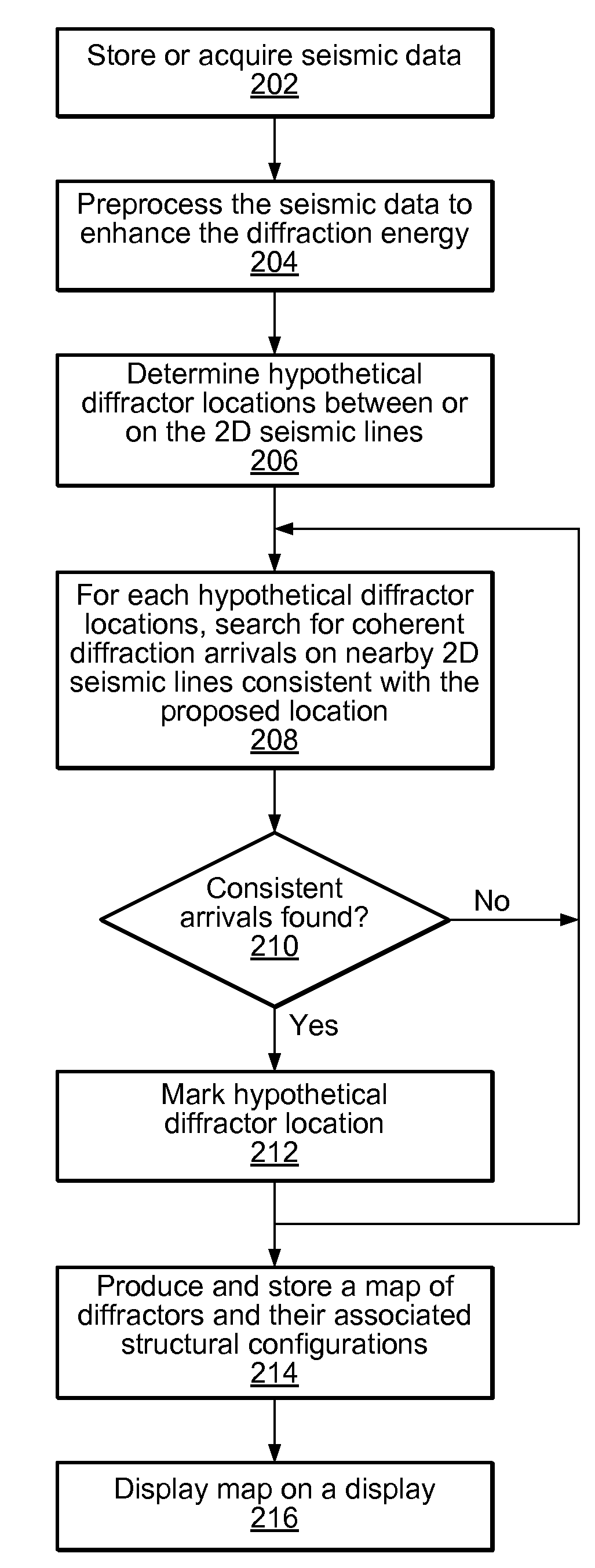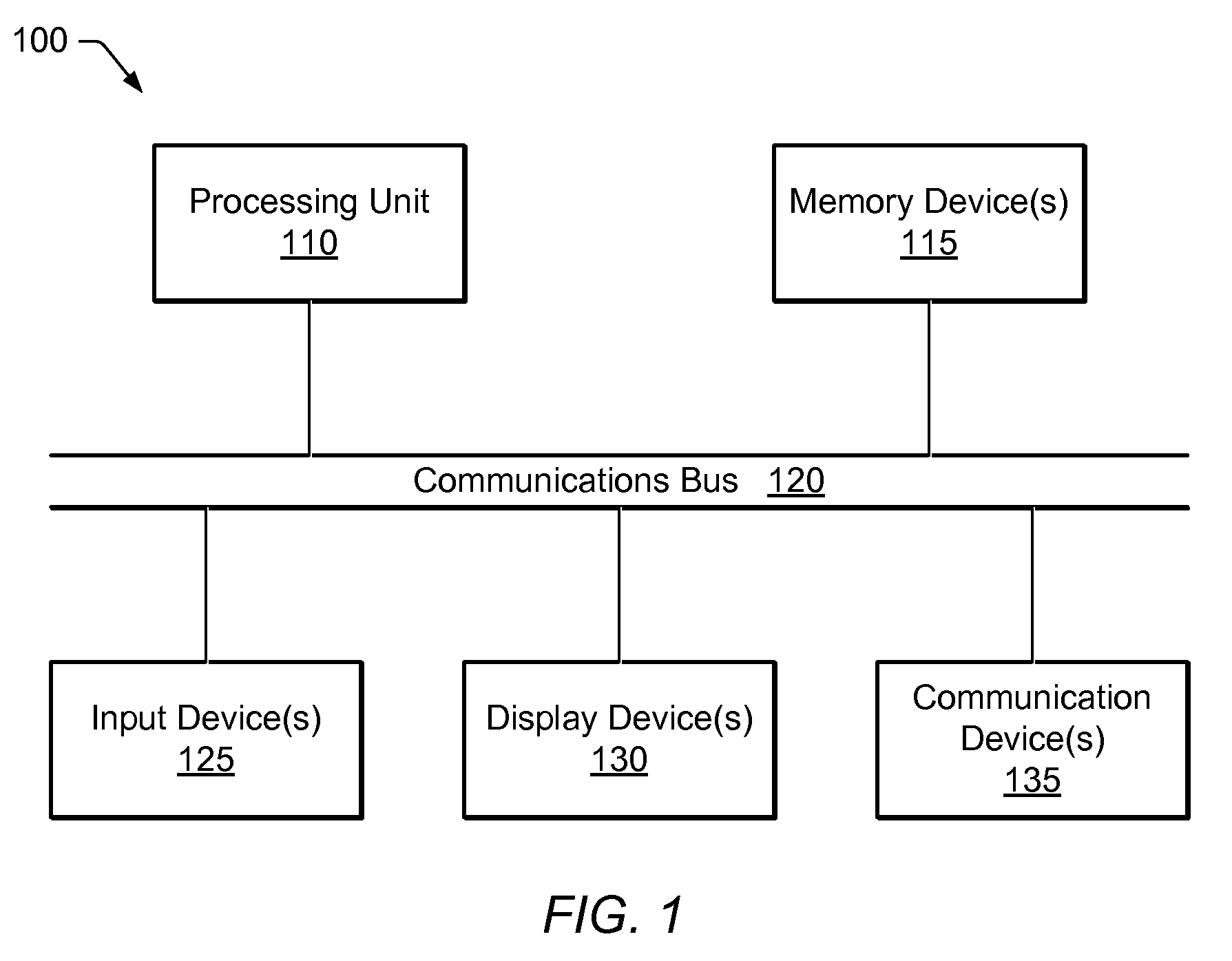Performing 3-D Scatterer Imaging From 2-D Seismic Data
a scatterer imaging and seismic data technology, applied in the field of seismic exploration, can solve the problems of not being able to provide reliable knowledge about the unpredictable structure of the lines, and not being generally suited to 3-d seismic migration imaging
- Summary
- Abstract
- Description
- Claims
- Application Information
AI Technical Summary
Benefits of technology
Problems solved by technology
Method used
Image
Examples
Embodiment Construction
FIG. 1—Computer-Based Analysis System
[0030]FIG. 1 illustrates a system 100 (such as a computer system) for analyzing seismic data according to one set of embodiments of the invention. System 100 may include a processing unit 110, a collection of memory devices 115, a communication bus 120, a set of input devices 125, and one or more display devices 130. The collection of memory devices 115 may include any of various forms of memory media and memory access devices. For example, memory devices 115 may include semiconductor RAM and ROM devices as well as mass storage devices such as CD-ROM drives, magnetic disk drives, magnetic tape drives, storage area networks (SANs), etc.
[0031]Processing unit 110 is configured to read and execute program instructions, e.g., program instructions provided on a memory medium such as a set of one or more CD-ROMs, and loaded into semiconductor memory at execution time. Processing unit 110 may couple to memory devices 115 through communication bus 120 (or...
PUM
 Login to View More
Login to View More Abstract
Description
Claims
Application Information
 Login to View More
Login to View More - R&D
- Intellectual Property
- Life Sciences
- Materials
- Tech Scout
- Unparalleled Data Quality
- Higher Quality Content
- 60% Fewer Hallucinations
Browse by: Latest US Patents, China's latest patents, Technical Efficacy Thesaurus, Application Domain, Technology Topic, Popular Technical Reports.
© 2025 PatSnap. All rights reserved.Legal|Privacy policy|Modern Slavery Act Transparency Statement|Sitemap|About US| Contact US: help@patsnap.com



